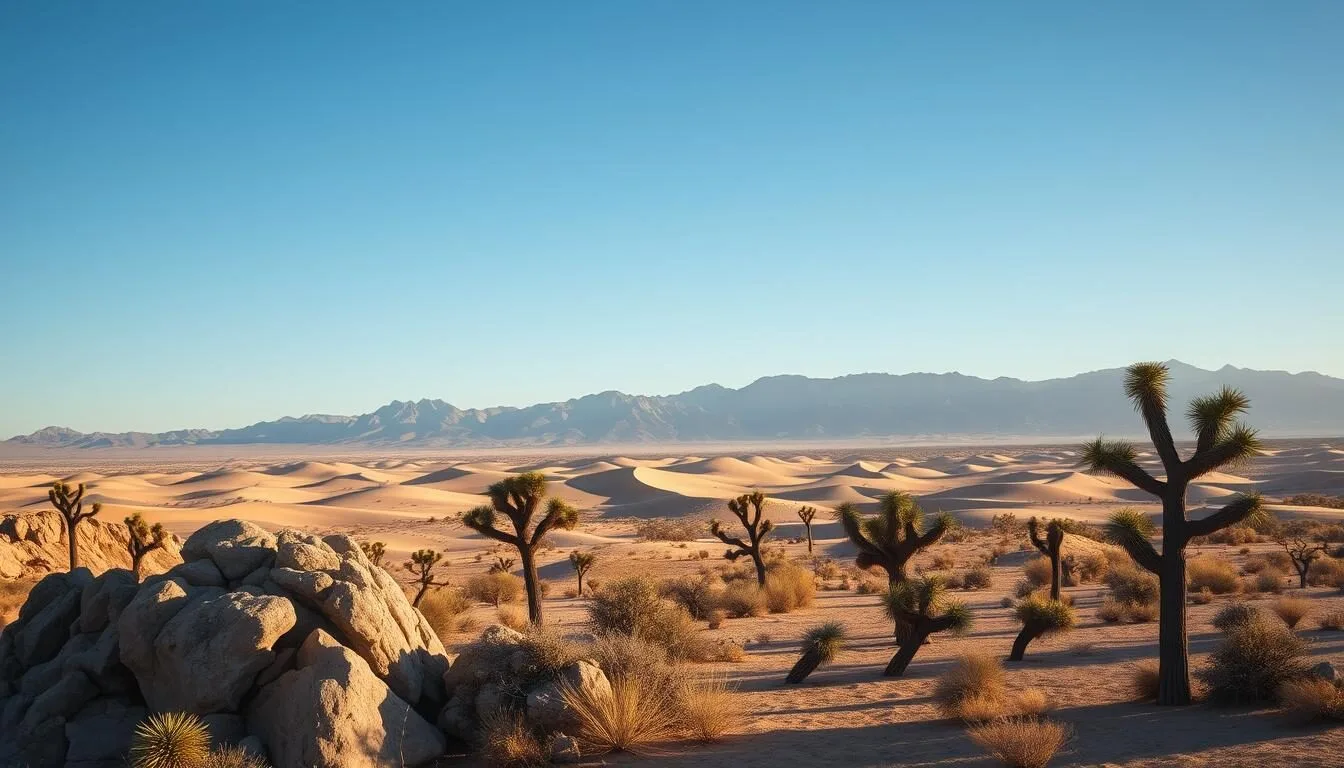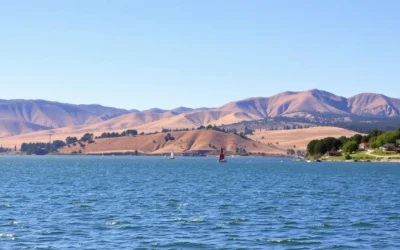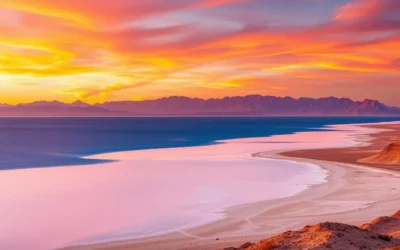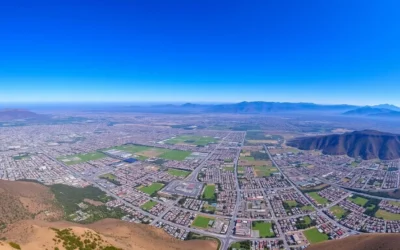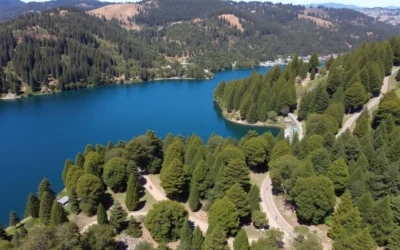✓ Accommodations ✓ Flights ✓ Rental Cars
Nestled in the heart of Southern California, the breathtaking Little San Bernardino Mountains offer a unique blend of desert landscapes and mountain vistas, creating an outdoor playground like no other.
As you explore this stunning mountain range, you’ll discover a diverse landscape where the Mojave and Colorado deserts meet, featuring iconic Joshua trees, unique rock formations, and spectacular viewpoints.
Whether you’re an adventure-seeker or a nature lover, this comprehensive guide will walk you through the top experiences and activities that make the Little San Bernardino Mountains a hidden gem in California’s outdoor recreation scene.
Discovering the Little San Bernardino Mountains
As you venture into the Little San Bernardino Mountains, you’ll uncover a world of natural beauty and diverse landscapes. This region, situated near Joshua Tree National Park, offers a unique blend of desert and mountainous terrains that are waiting to be explored.
Geographic Overview and Unique Features
The Little San Bernardino Mountains are characterized by their rugged terrain and diverse geological features. The area is marked by a transition from desert landscapes to mountainous regions, creating a variety of ecosystems that support a wide range of flora and fauna. The unique geography of this area makes it an attractive destination for outdoor enthusiasts and nature lovers alike.
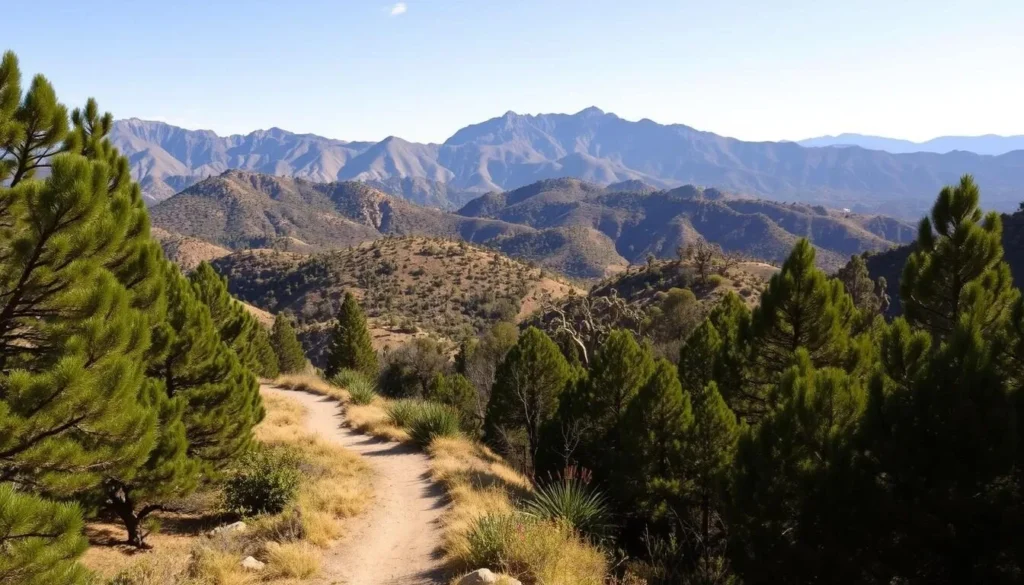
Best Time to Visit and Weather Considerations
When planning your visit to the Little San Bernardino Mountains, it’s essential to consider the time of year and weather conditions. The optimal time to visit is during spring (March to May) and fall (September to November), when temperatures are moderate and comfortable for outdoor activities. During these periods, you can enjoy hiking and exploring without the extreme heat or cold.
Here are some key weather considerations:
- Spring brings mild temperatures and the potential for wildflower blooms after winter rains, transforming parts of the desert into colorful landscapes.
- Summer days can be extremely hot, with temperatures often exceeding 100°F (38°C), making early morning starts crucial for safe hiking.
- Winter days are cooler and ideal for hiking, but nights can drop below freezing, requiring proper gear for camping.
- Visiting during peak seasons (spring weekends and holidays) requires early arrival to secure parking at popular trailheads, and considering weekday visits can help avoid crowds.
By planning your visit according to these weather tips, you can ensure a more enjoyable and safe experience in the Little San Bernardino Mountains.
Top Hiking Trails in the Little San Bernardino Mountains
If you’re looking for an adventure, the Little San Bernardino Mountains boast an array of trails that promise breathtaking views and unforgettable experiences. Whether you’re a seasoned hiker or just starting out, you’ll find a trail that suits your needs.
San Bernardino Peak Trail
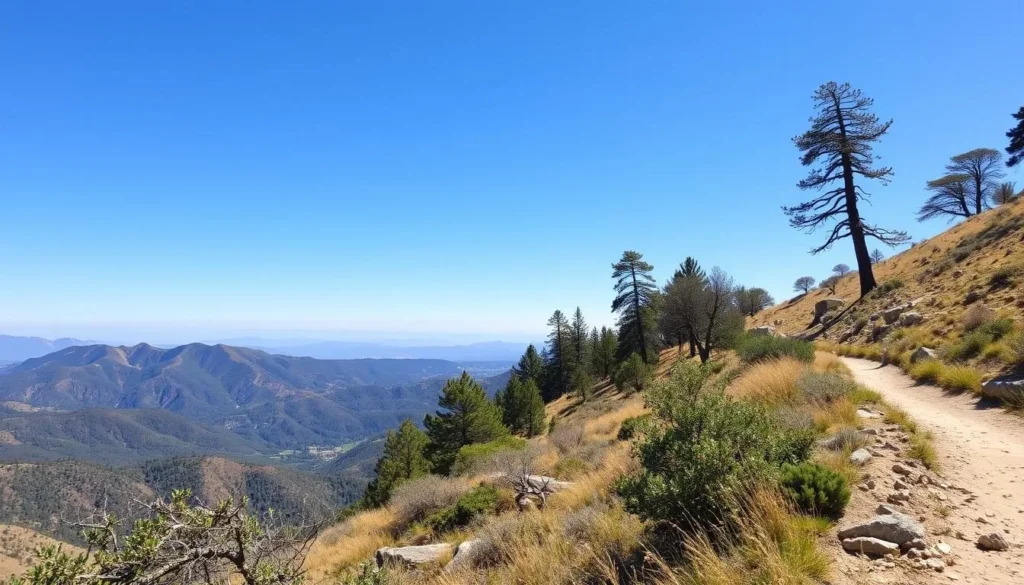
The San Bernardino Peak Trail is a challenging hike that rewards you with panoramic views from the summit. With a difficulty level that’s considered strenuous, this trail is ideal for experienced hikers looking for a hike that pushes their limits.
Hidden Valley Nature Trail
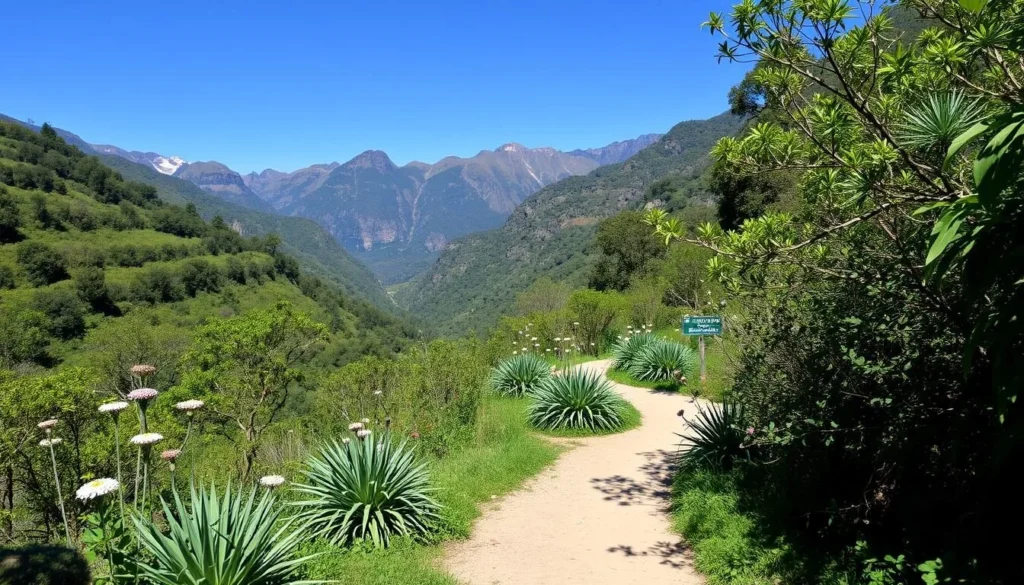
The Hidden Valley Nature Trail offers a more leisurely hike through a picturesque valley, surrounded by Joshua trees and other unique desert flora. This trail is perfect for families or those looking for a relaxing walk in nature.
Other Must-Try Trails for All Skill Levels
In addition to the San Bernardino Peak and Hidden Valley trails, the Little San Bernardino Mountains are home to numerous other trails that are worth exploring. Some of the top recommendations include:
- Barker Dam Trail: An easy 1-mile loop featuring a historic water reservoir, Native American petroglyphs, and abundant wildlife viewing opportunities.
- Ryan Mountain Trail: A challenging 3-mile round-trip climb with 1,050 feet of elevation gain, offering some of the best 360-degree vistas in the park.
- 49 Palms Oasis Trail: A moderate 3-mile journey to a surprising desert oasis with fan palms and year-round water.
- Arch Rock Trail: An easy 1-mile excursion to a remarkable 30-foot natural arch formation.
- Lost Horse Mine Trail: A 4-mile route to a well-preserved gold mine from the late 1800s, offering insight into the area’s mining past.
These hikes offer a range of experiences, from easy day spots to more challenging adventures, ensuring that you’ll find the perfect trail to suit your preferences.
Little San Bernardino Mountains, California: Best Things to Do – Top Picks
Exploring the Little San Bernardino Mountains reveals a plethora of exciting things to do and see. This region is a treasure trove of outdoor activities and natural wonders.
Stargazing in Joshua Tree National Park
Joshua Tree National Park is renowned for its incredible stargazing opportunities due to its dark skies. Find the best stargazing spots within the park, away from city lights.
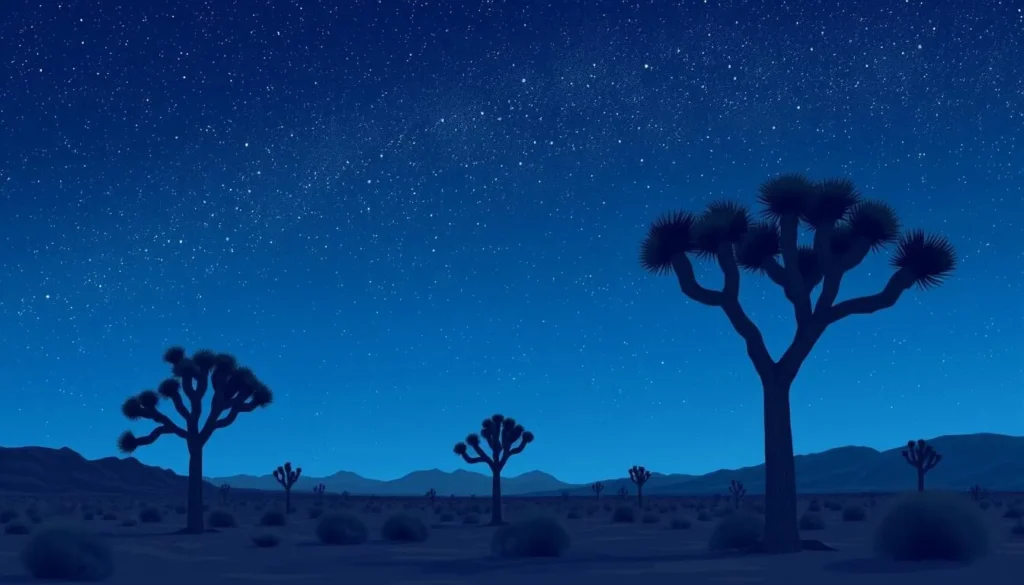
Rock Climbing and Bouldering Adventures
The Little San Bernardino Mountains offer numerous rock climbing and bouldering routes for all skill levels. Experience the thrill of climbing amidst the unique rock formations.
Wildlife and Plant Viewing Opportunities
The area is rich in biodiversity, with over 250 bird species and a variety of unique desert flora. Visit during spring to witness spectacular wildflower displays.
- The Cholla Cactus Garden in the Pinto Basin is a must-see, featuring a surreal landscape of “teddy bear” cholla cacti.
- Enjoy panoramic vistas and spot bighorn sheep at the Keys View lookout.
- Dawn and dusk are ideal times for wildlife viewing, with opportunities to see jackrabbits, coyotes, and bobcats.
As you explore this desert landscape, you’ll discover the natural beauty of the valley and surrounding mountains.
Cultural Attractions and Local Experiences
As you explore the Little San Bernardino Mountains, you’ll discover a blend of artistic, historical, and culinary experiences that enrich your visit. The region is dotted with unique cultural attractions that are worth spending your time on.
Art Installations in the Desert
The Noah Purifoy Outdoor Museum is a must-visit, featuring large-scale art installations amidst the desert landscape. This outdoor museum showcases the work of Noah Purifoy, a pioneering American artist known for his assemblage art.

Historic Pioneertown and Local Shopping
Pioneertown is a historic spot that offers a glimpse into the past, with its old-west architecture and charming shops. You can spend your time browsing through the various local stores, each offering something unique.
From antique shops to boutiques selling handmade crafts, Pioneertown is a great place to find memorable souvenirs or gifts.
Best Local Eateries and Coffee Shops
The Little San Bernardino Mountains region boasts a diverse culinary scene, with various eateries serving a range of delicious food. You’ll find several spots serving classic American fare, as well as innovative dishes that blend flavors from different cuisines.
Some popular places to dine include The Dez Fine Foods, known for its elevated takeaway options and excellent espresso, and La Copine, which offers creative dishes like battered fried eggplant and housemade ricotta with figs. Whether you’re looking for a hearty breakfast or a sophisticated dinner, you’ll find great spots to enjoy your meal.
Planning Your Visit to the Little San Bernardino Mountains
As you prepare for your adventure in the Little San Bernardino Mountains, it’s essential to plan your visit carefully. This ensures that you make the most of your time and have a safe, enjoyable experience.
Accommodation Options from Camping to Glamping
The Little San Bernardino Mountains offer a range of accommodation options to suit different preferences. You can choose from camping sites for a more rugged experience or opt for glamping for a more luxurious stay.
For those who prefer camping, there are several campsites within Joshua Tree National Park, offering basic amenities. On the other hand, glamping options provide comforts like real beds and kitchenettes, making your stay more enjoyable.
Essential Tips for Desert Safety and Preparation
When venturing into the desert, safety should be your top priority. Here are some essential tips to keep in mind:
- Prioritize water safety by bringing at least one gallon (4 liters) per person per day for hiking.
- Pack layers to adjust to extreme temperature fluctuations, which can range from below freezing at night to over 100°F (38°C) during summer days.
- Protect yourself from the sun with broad-spectrum sunscreen (SPF 30+), UV-protective sunglasses, a wide-brimmed hat, and consider UPF-rated clothing.
- For navigation, bring physical maps, download offline maps to your device, and consider a GPS unit due to spotty cell service.
Additionally, be aware that the closest major airport is Palm Springs International (PSP), about an hour’s drive from the park entrance. Renting a vehicle is essential as public transportation options are limited.
Conclusion
With its stunning landscapes and varied recreational opportunities, the Little San Bernardino Mountains are a must-visit destination in the Inland Empire. This guide has provided you with the essential information to plan your trip, from hiking the San Bernardino Peak Trail to stargazing in Joshua Tree National Park.
As you drive through the mountains, you’ll find numerous opportunities for adventure, including rock climbing and wildlife viewing. Don’t forget to purchase the appropriate pass for your visit, whether it’s a day use pass or an annual Adventure Pass.
The Little San Bernardino Mountains region, stretching from Big Bear Lake to the desert communities, is one of Southern California‘s most accessible natural treasures. As you drive back home, you’ll likely be planning your return visit, drawn by the area’s unique charm and beauty.
The above is subject to change.
Check back often to TRAVEL.COM for the latest travel tips and deals.
